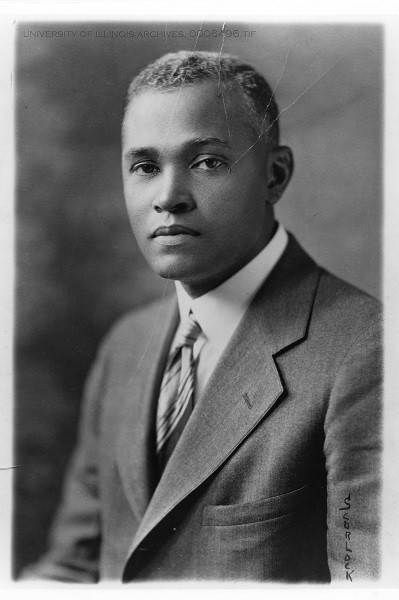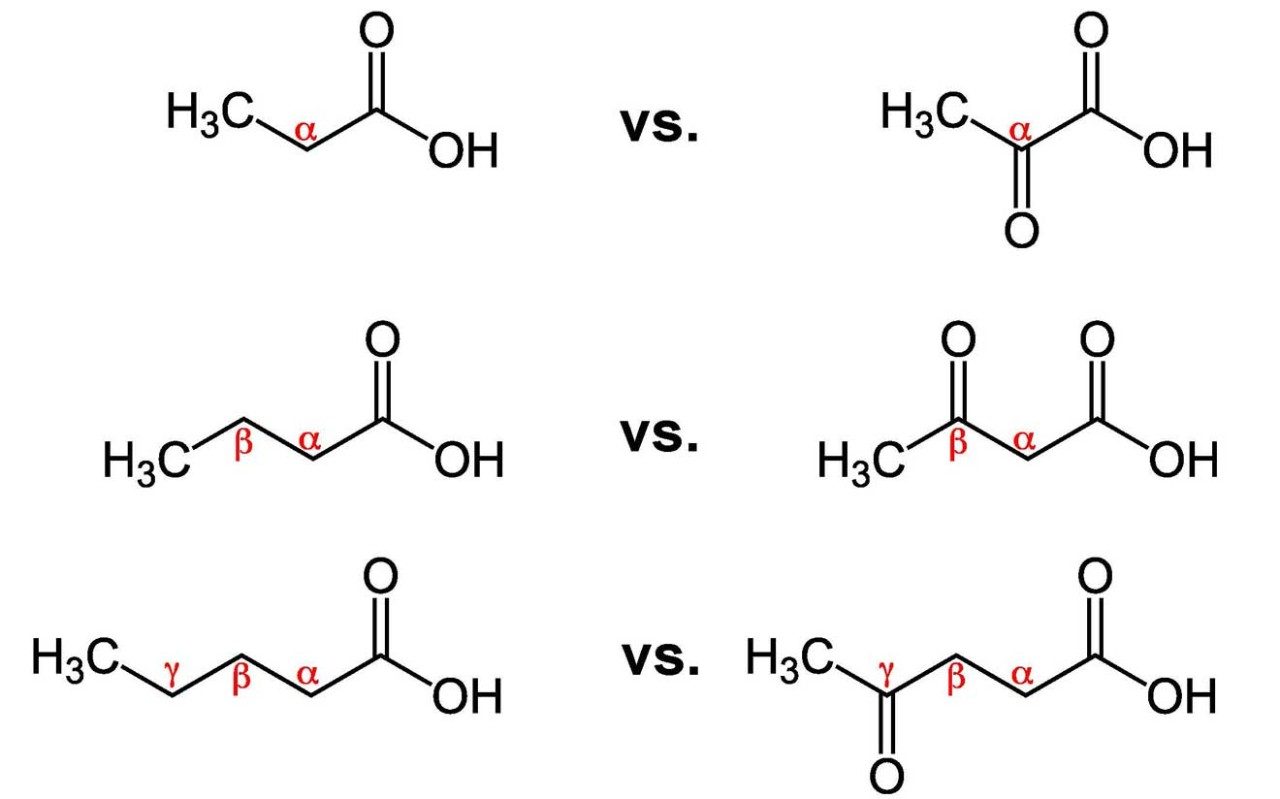St. Elmo Brady: First African American Chemistry Ph.D., Celebrated Educator Honored with Historic Landmark
St. Elmo Brady, the first African American to earn a Ph.D. in chemistry and a pioneering force in the education of students at four historically black colleges and universities (HBCUs), was honored on February 5 by the American Chemical Society with a National Historic Chemical Landmark. The designation was held at the University of Illinois at Urbana-Champaign (UIUC), the institution where he earned his doctorate degree in 1916, almost 50 years before the Civil Rights Act outlawed racial discrimination.
“This landmark designation recognizes the outstanding accomplishments and leadership impact that Dr. Brady has had on the chemical profession,” said ACS Immediate Past-President Peter K. Dorhout, Ph.D., a UIUC alumnus who presented the university with a bronze plaque about Brady at the designation ceremony. “I am proud to be an alumnus of the university that was part of his legacy — dreaming, designing, and executing the creation of four outstanding and impactful chemistry programs that have each worked to ensure access to higher education and the chemical professions for so many young African American men and women over the last century.”
Brady was born in 1884 in Louisville, KY. After earning a bachelor’s degree at Fisk University in Nashville, TN, in 1908, he taught for four years at Tuskegee University in Alabama. When UIUC offered him a scholarship in 1912, he continued his education, earning his M.S. in 1914 and his Ph.D. in 1916. At the time, less than 1% of the student body was African American, and the atmosphere was not welcoming. As Brady would later explain to his students, “They began with 20 whites and one other and ended, in 1916, with six whites and one other.”
Brady’s graduate research on the chemistry of carboxylic acids was sparked by a disagreement between his advisor, Clarence G. Derick, and the eminent Harvard chemist Arthur Michael. “Derick and Michael disagreed on how the acidity of carboxylic acids was affected by replacing hydrogen atoms on the carbon chain with other chemical groups,” wrote former ACS CEO Madeleine Jacobs, author of the “St. Elmo Brady” historical landmark booklet. “In his Ph.D. research, Brady investigated the acidity of straight-chain carboxylic acids in which a pair of hydrogen atoms was replaced with an oxygen atom to give a keto acid."


“Brady’s research resulted in a number of firsts, including new methods for preparing and purifying certain compounds and clarifying the influence of carbonyl groups on the acidity of carboxylic acids, an early contribution to the nascent field of physical organic chemistry. Brady’s studies supported Derick’s view, and he and others concluded that Michael’s view was incorrect. ”Brady completed his Ph.D. in two years, defending his dissertation, titled “The Scale Influence of Substituents in Paraffine Monobasic Acids. The Divalent Oxygen Atom,” on May 22, 1916. While in graduate school, he became the first African American admitted to Phi Lambda Upsilon, the national chemistry honor society. In its November 1916 issue, The Crisis magazine, the leading publication on black politics, history, and culture, named Brady Man of the Month.
Like other black scientists, Brady could not get employment at white research institutions. Employers refused positions to black candidates. Unable to get a job, he returned to Tuskegee to teach and chair the science department for four years. In 1920, he accepted the chemistry chair position at Howard University in Washington, DC. In 1927, he returned to Fisk to replace his former mentor, Thomas W. Talley, as chair of the chemistry department. After his “retirement” in 1952, he continued to work with the faculty at Tougaloo College in Mississippi to build their chemistry department and mentor students until his death in 1966.
“Brady’s most enduring legacy involves his efforts to enhance and create undergraduate curricula, graduate programs, and fundraising efforts [at HBCUs],”says Jonathan V. Sweedler, Ph.D., director of UIUC's School of Chemical Sciences.
Brady developed undergraduate curricula, established the first graduate chemistry program at a historically black college (Howard University), supervised the construction of the first modern chemistry facility at a black college, and created a summer program to teach faculty infrared spectroscopy techniques—key accomplishments given the lack of resources, facilities, and equipment at HBCUs.
He also started a lecture series at Fisk University named in Talley’s honor. It featured distinguished chemists as a way to encourage and support students in the way that Talley had influenced him.
Tuskegee, Howard, Fisk, and Tougaloo will be hosting campus celebrations of Brady’s achievements and mounting plaques in his honor.
In a published tribute, Samuel Massie, an esteemed African American chemist, said of Brady: “[He] not only built buildings and departments, he built men and women. He was never too busy to listen to the problems of a student or fellow faculty member... Although he is gone as a person, his shadow remains. It will always remain when men turn down offers for personal gain to serve others. It will always be there as a friendly teacher helps a student or a young colleague. It will show wherever better facilities in chemistry are erected... Truly the story of chemistry at four institutions is the lengthened shadow of a great teacher, friend and scholar—St. Elmo Brady.”
ACS established the National Historic Chemical Landmarks program in 1992 to recognize seminal events in the history of chemistry and to increase awareness of the contributions of chemistry to society. Past landmarks include the discovery and production of penicillin, the invention of synthetic plastics, and the works of such notable scientific figures as educator George Washington Carver and environmentalist Rachel Carson. For more information, visit www.acs.org/landmarks.
See the work of other important black chemists in honor of Black History Month, a celebration started by historian Dr. Carter G. Woodson in 1926 to address, as he noted, the fact that the contributions of African Americans “were overlooked, ignored, and even suppressed by the writers of history textbooks and the teachers who use them."
- Previously dedicated landmarks for African American chemists George Washington Carver, Percy L. Julian, and Norbert Rillieux.
- A celebration of the achievements and contributions of 11 African Americans who overcame great odds to pioneer some of the most important scientific discoveries and developments in U.S. history.
References
“Ancestors of Science.” (2005). Science. www.sciencemag.org/careers/2005/05/ancestors-science-st-elmo-brady
Black Pioneers of Academic Chemistry. (2009). Journal of Blacks in Higher Education (Theodore Cross Family Charitable Foundation), (65), 28. Retrieved from http://ezproxy.umuc.edu/login?url=http://search.ebscohost.com.ezproxy.umuc.edu/login.aspx?direct=true&db=ehh&AN=47355492&site=eds-live&scope=site
“First African-American chemistry Ph.D. honored with landmark during Black History Month.” (2019). American Chemical Society. www.acs.org/content/acs/en/pressroom/newsreleases/2019/february/first-african-american-chemistry-phd-honored-with-landmark-during-black-history-month.html
“Four Blacks among the Inaugural Class of 162 Fellows of the American Chemical Society.” (2009). The Journal of Blacks in Higher Education, (65), 28-29. Retrieved from www.jstor.org.ezproxy.umuc.edu/stable/40407533
Martin, D., & Martin, B. (2006). ST. ELMO BRADY (1884–1966): PIONEERING BLACK ACADEMIC CHEMIST. Florida Scientist, 69(2), 116-123. Retrieved from www.jstor.org/stable/24322347
“St. Elmo Brady.” (2019). American Chemical Society. https://www.acs.org/content/acs/en/education/whatischemistry/landmarks/st-elmo-brady/_jcr_content/articleContent/columnsbootstrap_587498027/column1/image.img.jpg/1548547239659.jpg.
